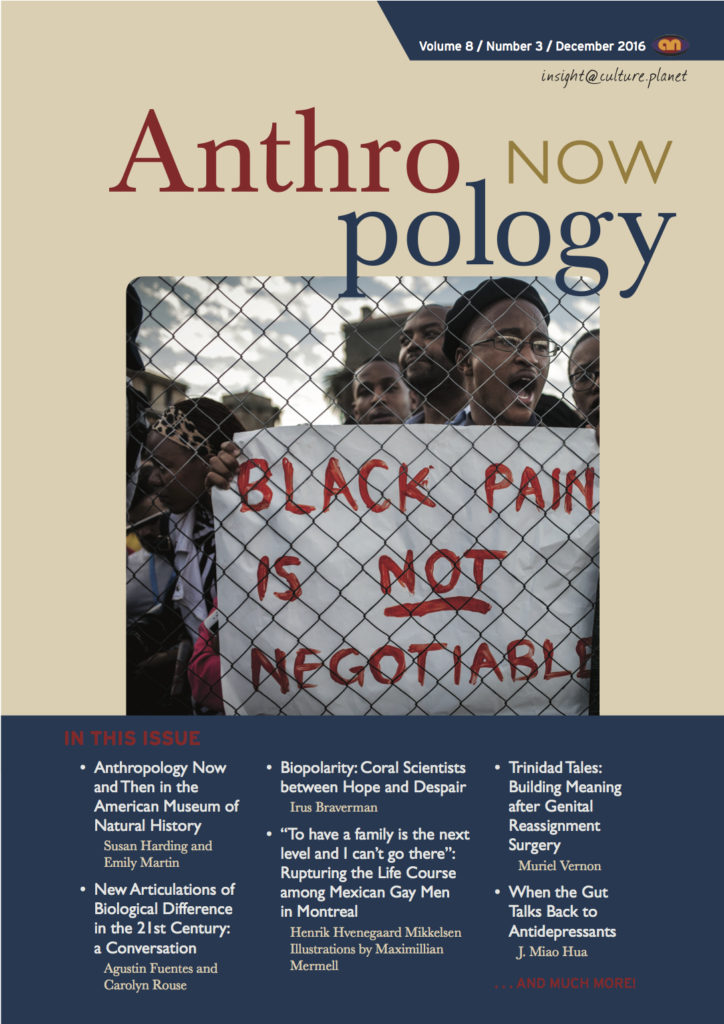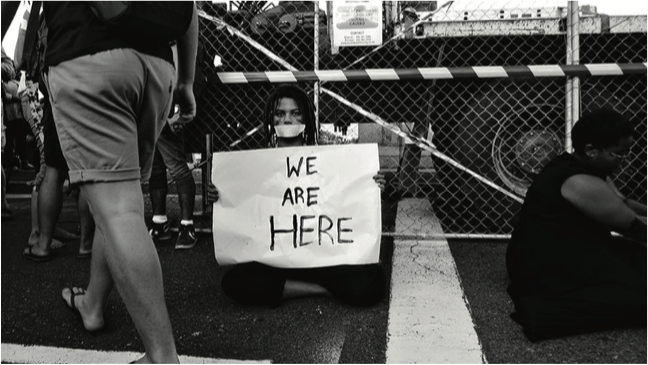Anthropology Now and Then in the American Museum of Natural History
The best thing, though, in that museum was that everything always stayed right where it was. Nobody’d move. You could go there a hundred thousand times, and that Eskimo would still be just finished catching those two fish, the birds would still be on their way south, the deers would still be drinking out of […]
December 2016

Volume 9 | Number 3 | December 2016 Features Anthropology Now and Then in the American Museum of Natural History by Susan Harding and Emily Martin New Articulations of Biological Difference in the 21st Century: A Conversation by Agustín Fuentes and Carolyn Rouse Biopolarity: Coral Scientists between Hope and Despair by Irus Braverman “To have […]
Uncommon Sense: Terreur, Terroir, Terrace
Terreur, Terroir, Terrace Vectors of Police and Public in France after Charlie Hebdo and La Bataclan Introduction In November 2015, the city of Paris witnessed the second series of deadly attacks in less than a year. The first occurred on January 7, 2015, at the offices of the satirical magazine Charlie Hebdomadaire (affectionately nicknamed Charlie […]
What Happens When We Flush?
Coming soon in the print journal of Anthropology Now: What Happens When We Flush? by Nicholas C. Kawa In this riveting article on the disposal of human waste, author Nicholas Kawa provides us with a comprehensive look at the history, cultural, biologic and public health context of the disposition of human feces. Kawa has presented […]
#EverythingMustFall: The Use of Social Media and Violent Protests in the Current Wave of Student Riots in South Africa

The past year has seen violent protests at most South African universities, where students have pursued the dual goals of free education and a decolonization of education. Severe dissatisfaction with everything from tuition fees, housing schemes, languages of instruction and symbolic tributes to colonial stalwarts have coalesced to produce a tense environment of conflicts and […]
The Tintometer, Anthropology and the Science of Color

In 1898, physician and marine biologist A.C. Haddon set off with a group of scientists from Cambridge, England. They aimed to study the residents of what they considered the antipode — the opposite side — of the earth, in particular the Islanders of the Torres Strait, between New Guinea and Australia. The Cambridge expedition’s cargo […]
September 2016

Volume 8 | Issue 2 | September 2016 Features #EverythingMustFall: The Use of Social Media and Violent Protests in the Current Wave of Student Riots in South Africa by Bjarke Oxlund The Tintometer, Anthropology and the Science of Color by Emily Martin Caring for Computers: How Russian Data Scientists Refashion Their Laptops by Ian Lowrie […]
More than Scenery: National Parks Preserve Our History and Culture

On August 25, 2016, the National Park Service (NPS) will celebrate its 100th birthday. But what’s a party without people? In fact, while many Americans think of national parks as places to experience nature, they also preserve unique resources that tell stories about the everyday lives of people and their American journeys. Along with protecting […]
When State Replaces God

Following every international or domestic terrorism act committed by a Muslim, the American-Muslim community divides under political pressure on the issue of whether or not Muslims should take collective responsibility and communally condemn the acts of a few individuals. On one hand is a group of Muslim activists and organizations who condemn and account for […]
Good Earth: Exploring the Old Lead Belt

Lead mining in southeast Missouri is more than just an industry. It is an ingrained and defning aspect of the environment and community. In 1719, when French explorer Philip Francois Renault discovered high concentrations of lead in the region, he was unaware that he had stumbled across the largest lead deposit in the world. One […]

